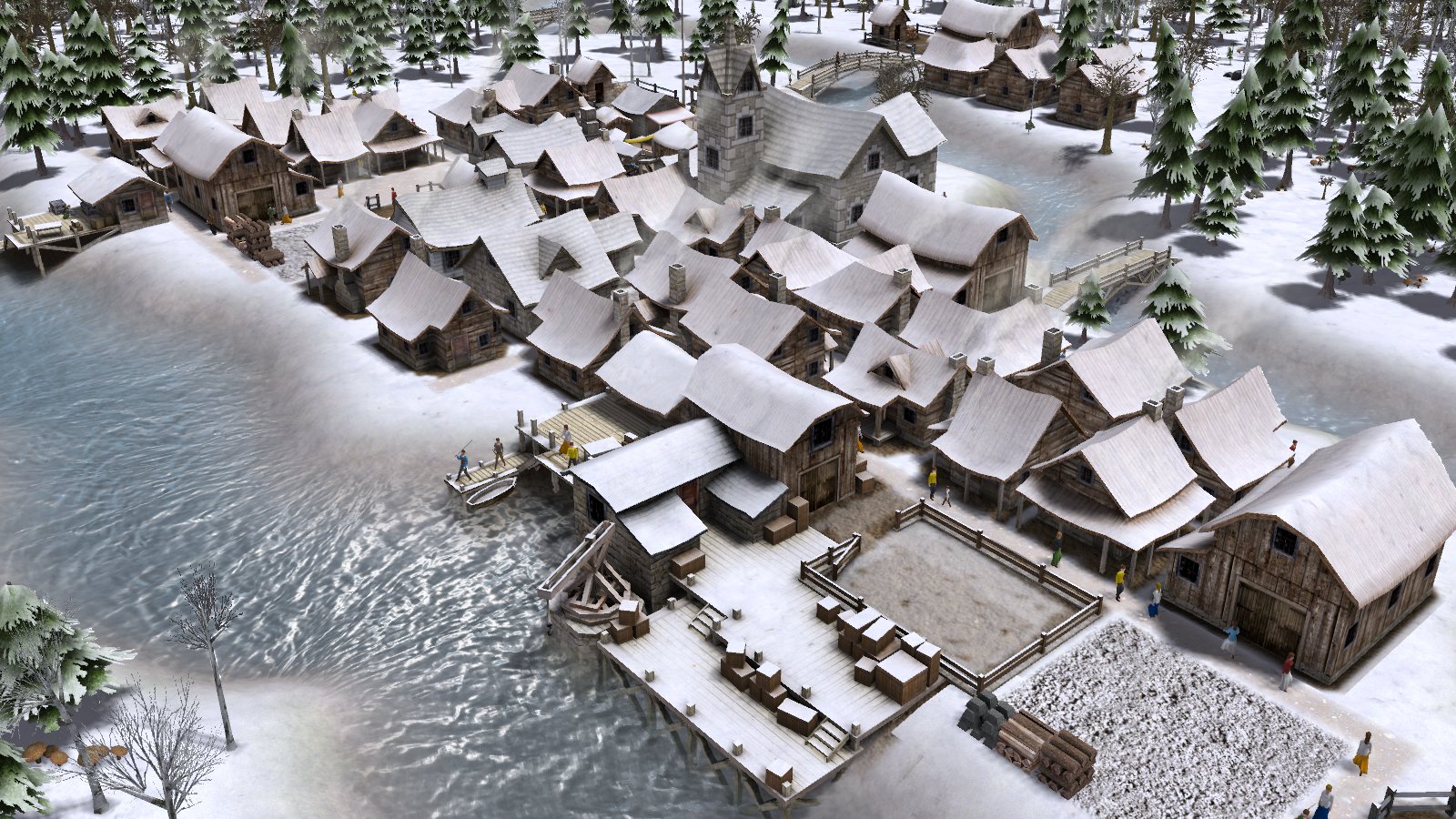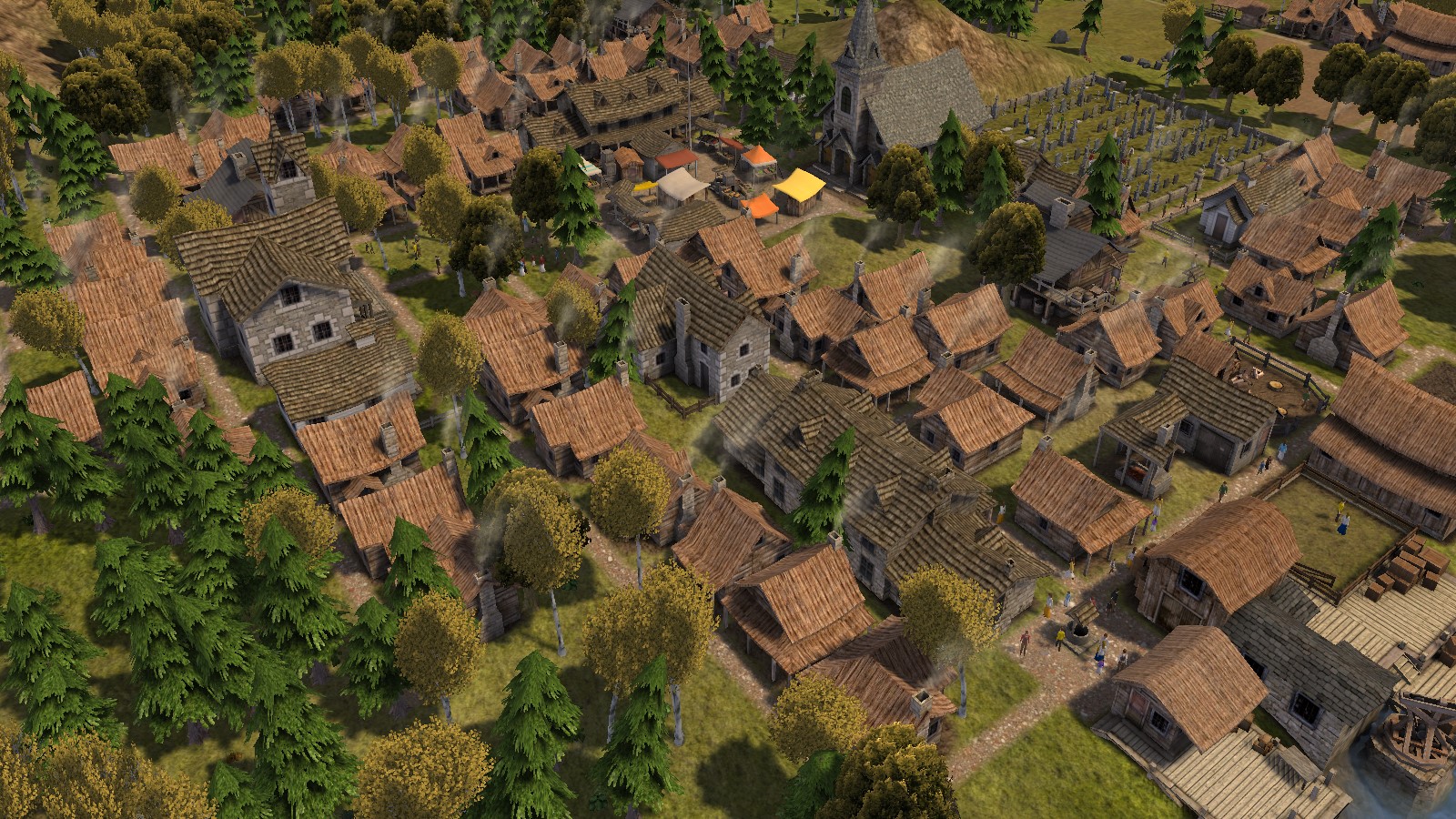
Seven Years of Plenty
Luke Pensiero looking too close and too hard at this new survival city-builder.
Somewhere in a drawer lies a small Swiss Army knife. It was gifted to me while taking part in a brief foray with the cub scouts. I received no instruction on the responsibility of such a device or how to use it, but eagerly sought it for my possession. I spent most of that weekend shaving small branches, mimicking what I’d seen in old movies. It was all pretend, but it sure looked like I knew what I was doing. I now sit at my desk trying to manage a settlement when I realize this game and the knife are the same: I have no idea what I’m doing. I received no objectives or indication of what responsibility this entails.
Banished, the recent city building/survival sim by Shining Rock Software, creates an environment similar to something the first settlers of new lands might have faced: Untapped wilds, endless possibility and loneliness. Players spend their time with Banished managing a small band of exiles who eventually settle down to form an city. Planning construction projects, developing infrastructure and managing the population are all common tasks. The goal of the game, if you can even say it’s a goal, is to survive, allowing players free reign over their society of outcasts.
However, Banished doesn’t leave your mind when you turn off your computer and call it a night. You try to stop thinking about the fire that destroyed the entire town center or the early winter that you’re not really prepared for, but it’s hard to stop worrying. Even more scary is that Banished reveals a few key aspects of human civilization through its deceptively simple mechanics and the nature of its banished denizens: their ever growing communities, exponentially increasing needs and, most of all, the fragility of their existence.
It’s only after turning off Banished that I realize this simple game mirrors reality much better than it probably set out to. The little people of Anmoor, my current attempt to best the harsh world of Banished, need a lot of stuff. The villagers require food for energy, houses for shelter, herbs for medicine and firewood to keep warm in the dead of winter. And that is for a simple town with only a handful of families. Resources are key to Banished, and they tend to go out as fast as they come in. Setting up constant production is extremely important to supporting the townsfolk. Failure to keep supply up quickly leads to missteps that quickly lead to villager deaths.
The fisheries of Anmoor work day and night, all year round, churning out crates of fish. Sally, a 60 year old fisherwoman, wakes up every day, eats some fish, heads down to the pier, fishes from dawn till dusk, retires to her home, has a dinner of fish and sleeps, only to repeat this routine until the day she passes. The amount of fish and labor needed to support a part of the diet for the town seems astronomical. I get the feeling we could just never get ahead and build a solid stockpile.
Memories of piers in the real world pop up in my head. The crates upon crates of fish I’ve seen while there, that continue to come in after I leave as they had before my visit. The idea of in and out, all day, a constant flow of fish in both Anmoor and reality is staggering. There are severe warnings of overfishing, but that does not thwart the need for fish. People still have to eat, right? Sally’s seemingly dull life help supports the 50 something other people in the town, with no real end in sight.
Great planning and infrastructure construction has led Anmoor to become a stable town. Now almost a dozen families reside in the town, with key industries set up to support them, but their job is never over. Sure, Sally needs to fish everyday to make the desired fish output, but her kids are at the point where they will be having children. Sally’s going to be a grandmother. The cycle continues.
What I find shocking is how explosive the populations of Banished can be. Just when you feel stable, just when things start to feel sustainable, families grow, people multiply and the needs increase. Growth never ends, nor should it. I could always use more miners for the stone quarry. Players enter into a bind where if they want to expand their influence and for their town to grow, they need more people. In a lot of ways, my grand designs for Anmoor actually lead more to its potential instability. Population increases, while great for getting things done, carry a multitude of hidden consequences.
For every new Anmoorian, dozens of new logistics need to be determined: housing, food, jobs and even graveyard space, morbid as it is to plan for that. Just because I want more people to mine stone, my population is exploding, always seeming slightly ahead of what I can support. It’s a weird two-way street: I want growth and plan for it but at the same time I really have no control over it.
Looking around the world today, populations are growing almost everywhere, with the world total population standing at an estimated 7.1 billion and growing every second. Banished shows what a nightmare planning for maybe half a dozen new families can be, but billions of people? Real city planning and population management must be unimaginably complex.
While daydreaming about world populations, a fire breaks out in early summer and the woodcutter and storage barn go up in flames along with numerous houses. The Anmoorians successfully fight off the fire and begin to rebuild. Glancing at the calendar, I realize the days have flown: It’s autumn now. Houses still need to be rebuilt, the storage barn reclaimed and the woodcutter put back to work.
The sky is grey and cloudy when a single white speck falls. Many follow. An early winter.
Even if I successfully plan for every early winter, for every steady increase in population, I’m never truly ready for everything. Disasters happen and ripple through the town for years to come. Sometimes it’s simply a tornado that scares you a little, but sometimes it’s something much worse.
When a wounded town dies, it doesn’t happen overnight. Frantic micromanagement and rash choices might lead to band-aid solutions and quick fixes, but the ripple effect of player decision making is constantly felt. For instance, rebuilding burnt houses straight away might leave your firewood reserves exhausted in time for winter. Time ends up being a key resource in Banished, with there never being enough to recover when much damage has been done. The population is ravaged, key industries no longer operate and no one is coming to save the day. The exiled nature of Banished creeps in and you start to realize that your founding families were not meant to survive for long.
Anmoor was able to recover from the great fire, but only barely. The agitated nature of managing resources and labor eventually began to take a toll on me. I’m constantly trying to plan 3 steps ahead, and it’s working so far. But I start to see a finish line, even though the game knows no victory state. Its world is finite and even with perfect planning the expanding needs of Anmoor will eventually hit a cap.
I shiver. Banished is a sobering take on human civilization. A cute, fun thing with some decent challenge to it, as well as high stakes and a lack of simple solutions. I keep on pretending to be a competent city manager, only mimicking what I’ve seen in YouTube videos combined with some slight improvisation. Anmoor’s future is looking bright now that the lesson of how to manage it has been bitterly learned, but how long will it last? How big can it grow?
Luke Pensiero is a journalist currently pretending to be a professional scanner while combating his greatest enemy: inertia. He can sometimes be found rambling on Twitter.


